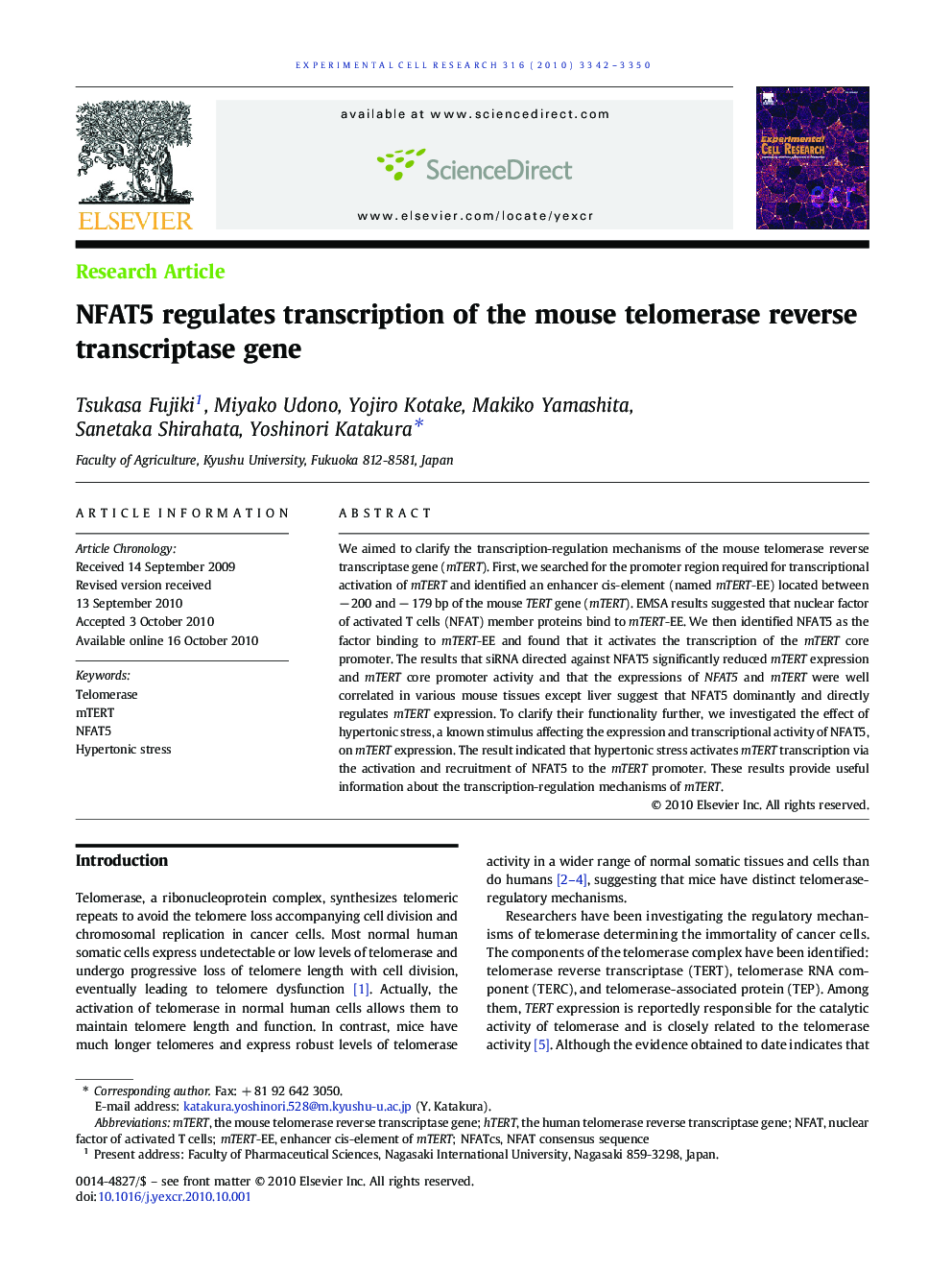| Article ID | Journal | Published Year | Pages | File Type |
|---|---|---|---|---|
| 2131365 | Experimental Cell Research | 2010 | 9 Pages |
We aimed to clarify the transcription-regulation mechanisms of the mouse telomerase reverse transcriptase gene (mTERT). First, we searched for the promoter region required for transcriptional activation of mTERT and identified an enhancer cis-element (named mTERT-EE) located between − 200 and − 179 bp of the mouse TERT gene (mTERT). EMSA results suggested that nuclear factor of activated T cells (NFAT) member proteins bind to mTERT-EE. We then identified NFAT5 as the factor binding to mTERT-EE and found that it activates the transcription of the mTERT core promoter. The results that siRNA directed against NFAT5 significantly reduced mTERT expression and mTERT core promoter activity and that the expressions of NFAT5 and mTERT were well correlated in various mouse tissues except liver suggest that NFAT5 dominantly and directly regulates mTERT expression. To clarify their functionality further, we investigated the effect of hypertonic stress, a known stimulus affecting the expression and transcriptional activity of NFAT5, on mTERT expression. The result indicated that hypertonic stress activates mTERT transcription via the activation and recruitment of NFAT5 to the mTERT promoter. These results provide useful information about the transcription-regulation mechanisms of mTERT.
